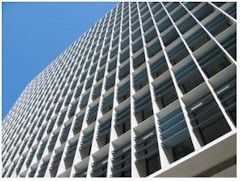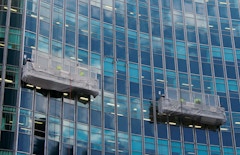
End-of-Life Challenges in Facade Design
In recent decades, there has been increased attention to reduce the operational energy performance of buildings. Stringent legislation on building

In recent decades, there has been increased attention to reduce the operational energy performance of buildings. Stringent legislation on building

The European building stock is mainly constituted by highly energy demanding buildings. The only way to a more sustainable and decarbonized building

Exterior shading devices, when typically used, are horizontal planes that are most effective at the south face of buildings in the northern

Facades play an important role in the control of energy flow and energy consumption in buildings as they represent the interface between the outdoor

In the last few years, the design community has embraced the challenge of reducing embodied carbon in buildings. Several tools are now available for

Mic Patterson unpacks his crystal ball and looks ahead to the forces that will shape buildings over upcoming decades. Expect some surprises down the road…

The façade system is a potent potential lever for bringing transformative change to buildings and urban habitat in the pursuit of carbon reduction and net zero carbon goals. Nothing in architecture combines attributes of appearance and performance as does the building façade.
Glazed wall systems, such as curtain walls and window walls, are one of the most commonly used façade systems in modern buildings in North America.


Contemporary building practice represents a disconnect between traditional manufacturing techniques, that favor straight runs and orthogonal



Ivan Lee, a Building Science Consultant at Morrison Hershfield recognizes the importance of mitigating thermal bridging to meet low energy targets for buildings. He points out that many jurisdictions are starting to incorporate thermal bridging into their codes and standards

We construct building enclosures to keep the elements out, but sometimes air and water infiltrate the building envelope, causing several problems for


Performance attributes are gradually eclipsing those of appearance as people-centric and zero-impact design comes to dominate practices of buildings and urban habitat. Doug Noble has a message for those interested in preparing for a leadership role in the emerging future of the built environment.
The construction industry is one of the greatest sources of pollution, where 39% of global energy-related carbon emissions are attributed to